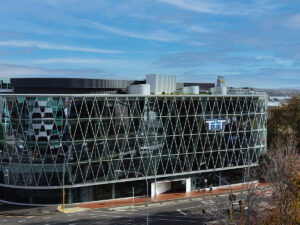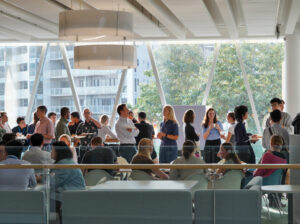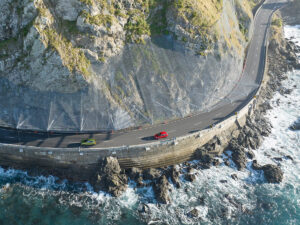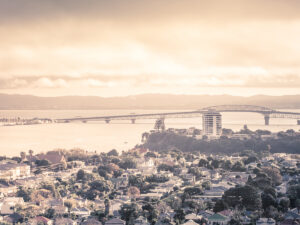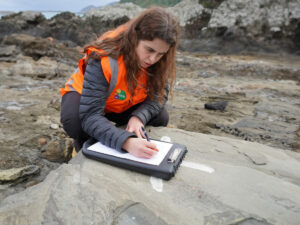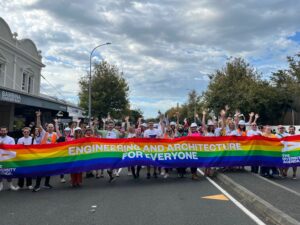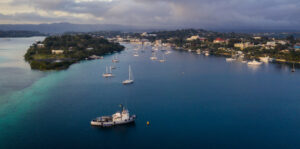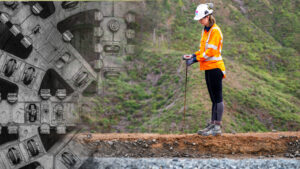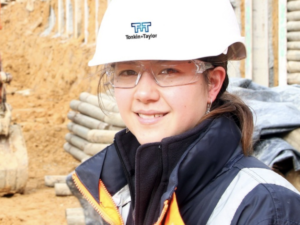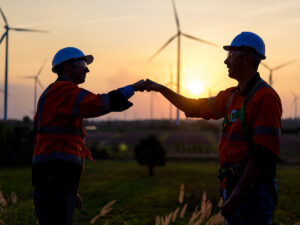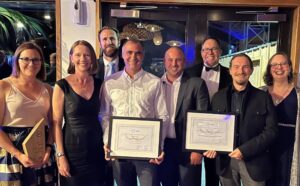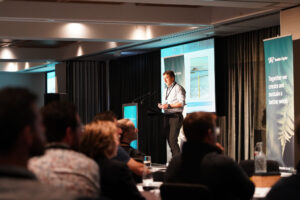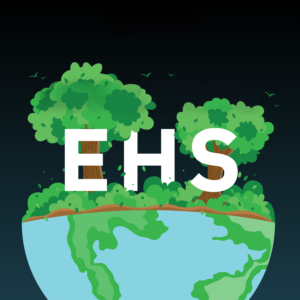Empowering youth for a resilient future is the central theme of this year’s Disaster Risk Reduction Day. As we face a growing range of natural hazards and climate-related disasters, preparing and empowering the next generation to develop resilient attitudes toward climate-related challenges is paramount. Tonkin + Taylor asked our technical experts, passionate about educating young people, how we can best empower and engage with our youth to build a safer, resilient society.
Reducing the risks of disaster through education
Education is pivotal in empowering youth to be proactive in disaster risk reduction, providing them with the tools to be better prepared, understand risks, and respond quickly and appropriately in disaster situations.
Morgan Lindsay, Climate risk + Geospatial consultant highlights “In Aotearoa, you often learn some of the basic survival messages in school, such as what to do in a fire, what to do in an earthquake, and what happens if you get split from your family during an event. Youth are a great conduit for information to be circulated to families and peers. An increase in activities and learning modules could be embedded into the New Zealand curriculum to allow children to learn and understand more about the natural hazard risks they could face, getting children to act out simulations at home, and giving them homework that gets their family members involved.”
We must focus on the benefits of exploring more ways in which we can engage our youth in disaster and risk education. These education modules and learnings allow the curriculum to spread messages that enable us to relay up-to-date education to both youth and parents more regularly and consistently. “This consistency in education can allow us to embed and sustain longer-term increases in preparedness and contributes to broader positive community impacts,” says James Hughes – Technical Director of Climate + Resilience.
Our youth are digital natives so getting digital in our approach to education is key, Morgan Lindsay explains, “Creating immersive experiences through VR or digital games is a great way to gamify and provide a sense of reality to situational education. Creating a VR experience of what a flood could look like in their street or creating a digital game where users would have to ‘save the world from climate change’ and giving scenarios where users could select policies, and pathways, and create strategies to reach set goals. Making things simple and gamified can potentially engage a younger audience.”
Effective approaches to engage and empower our Tamariki
We cannot stop at only educative tools to engage and empower our young people to increase their resilience to natural hazards and disasters. “Young people will also experience more slow-onset, multi-year disasters – not just extreme events like flash floods. As a result, our Tamariki needs to be at the heart of the solutions” explains Paddy Pringle – Principal Consultant, Climate Risk + Resilience.
Tonkin + Taylor have recently been involved in designing a project that responds to both sudden disasters, such as cyclones, and slow-onset disasters, like sea-level rise and droughts. These environmental challenges disproportionately impact young people, especially in the Pacific region, where the youth are not only at risk of losing their homes but also their cultural heritage and access to education.
Disasters and slow-onset events can significantly disrupt education by damaging infrastructure, displacing families, and diverting resources away from learning. Furthermore, these events can erode the cultural identity of communities, as traditional knowledge, stories, songs, and practices are often passed down through generations, but have the potential to be lost in times of crisis.
One of the key aspects of this project focuses on understanding the losses and damages caused by these events, particularly their impact on culture and education. We aim to explore what these losses mean for today’s youth, who are currently in school, and how this knowledge can help future generations. By capturing and integrating cultural elements—such as stories, songs, and traditions—into school curriculums, the project ensures that children not only continue to learn about their heritage but also develop a sense of resilience and identity in the face of climate challenges.
James Hughes highlights the growing challenge of engaging youth in DRR initiatives, noting that “Our societies, both in Aotearoa and beyond are becoming increasingly fragmented and individualistic, posing a challenge and an opportunity for engagement in schools and communities, to get youth involved in DRR initiatives.” To actively engage youth in an individualistic society means framing DRR in ways that align with their values, such as independence, digital engagement, peer influence, and fostering an understanding of the wider social responsibility of risk reduction.
As Paddy Pringle emphasises, “disaster risk, climate adaptation, and resilience can all be approached by working with nature. Connecting young people to nature will be vital if we are to overcome the root causes of climate change. It also provides immediate and practical ways of reducing risk such as slowing water in upper catchments, wetland rehabilitation, and coastal protection.”
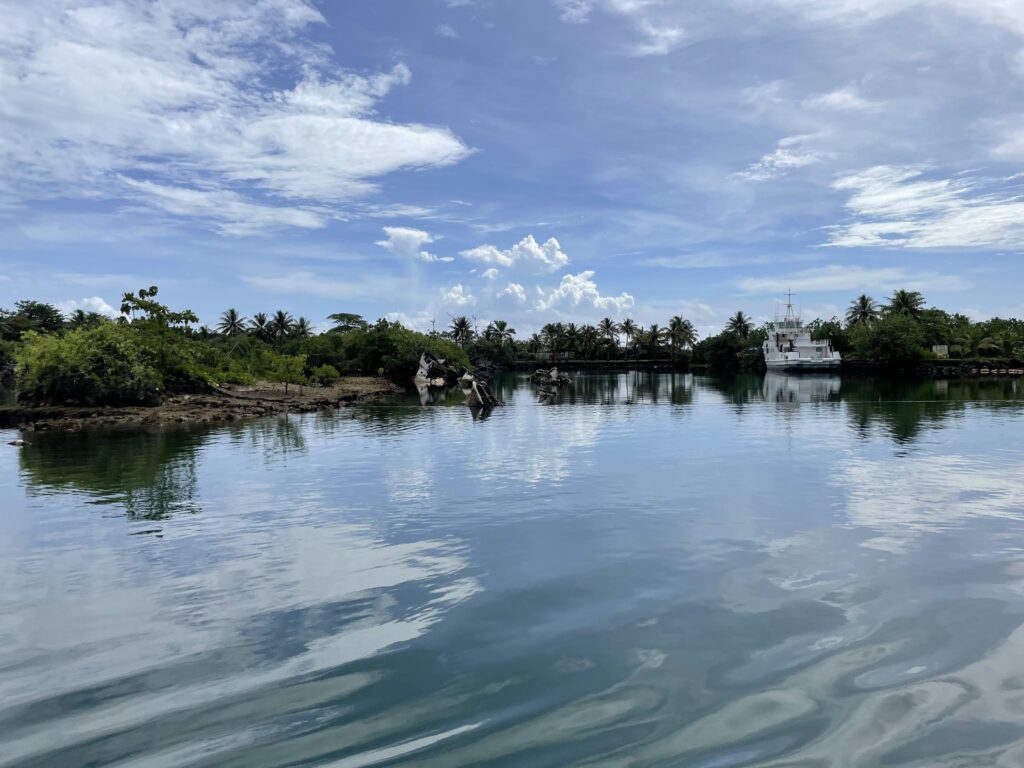
Engaging youth with nature not only fosters a deeper understanding of climate challenges but also empowers them to become active participants in tangible, nature-based solutions. Programs like New Zealand’s Student Volunteer Army (SVA) offer a powerful platform for this kind of engagement, where young people can take part in hands-on initiatives. By volunteering in projects centered around enhancing the resilience of our natural world, youth can see firsthand the direct impact their actions have on reducing disaster risks and enhancing resilience. These experiences instil a sense of responsibility and connection to their environment, making them not just volunteers, but stewards of their communities and the planet. This approach not only addresses immediate risks but also cultivates a generation committed to long-term sustainability and disaster resilience.
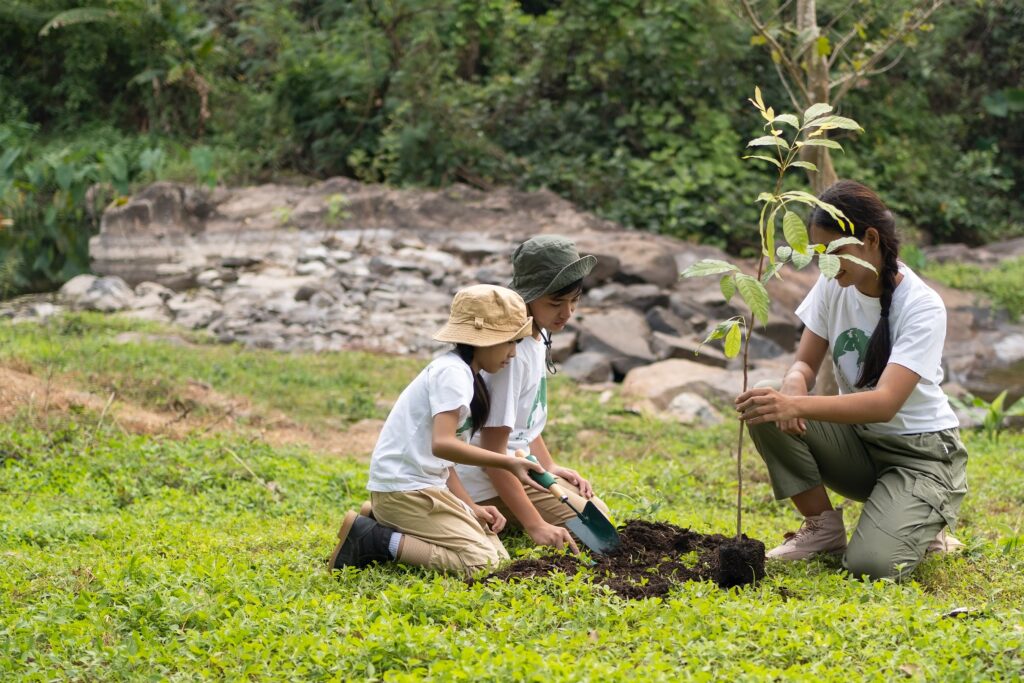
By framing the focus on individual empowerment, offering tangible learning experiences, and empowering youth to engage in the natural environment around them, we can better prepare youth to take meaningful action in building resilience in their communities.
Agency and empowerment to last a lifetime
As New Zealand and the world continue to face the growing risks of climate change, sea-level rise, and natural hazards, youth will be central to ensuring our communities can adapt and thrive. With their energy, creativity, and eagerness to contribute, young people have the potential to be agents for innovative solutions, raise awareness in their communities, and build resilient habits that can target multiple generations and last a lifetime.
“Having more education around these topics and the risks these events and hazards can cause, will allow the younger generation to feel empowered to make informed decisions, to challenge the way our local communities and governments plan, it will prepare them if an event is to occur, and give them the tools to get through.”– Morgan Lindsay
On this World DRR Day, we celebrate the vital role that young people play in creating a safer, more prepared future. Together, with a focus on education and empowerment, we can build stronger, more resilient communities for generations to come.
To read more about climate resilience and adaptation in Aotearoa read
Paving a Path to Long-term Climate Adaptation article by Paddy Pringle


